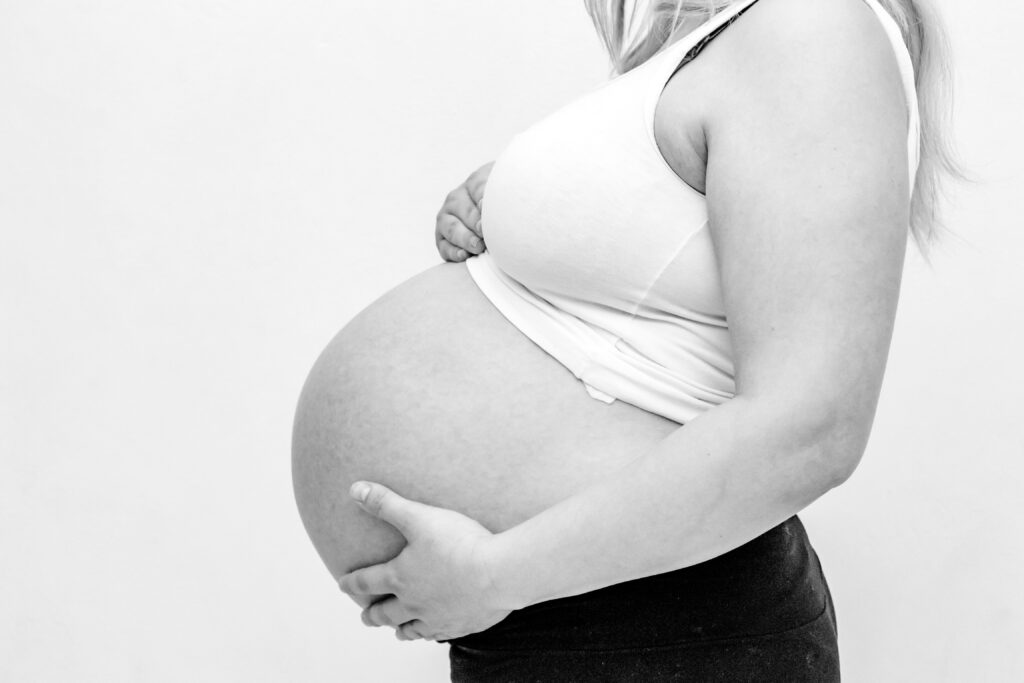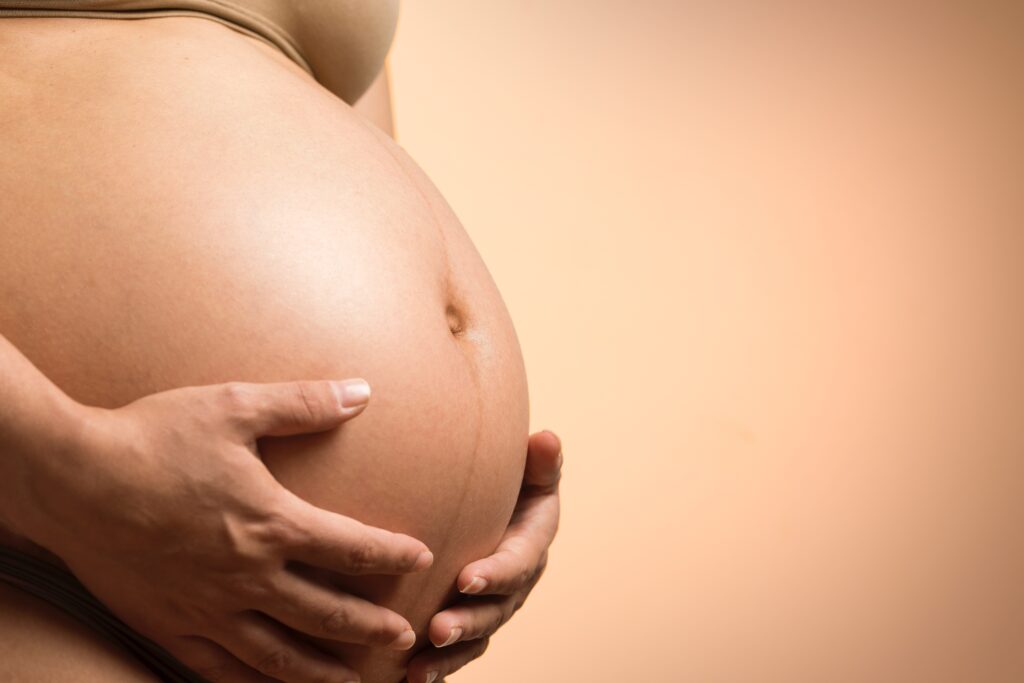I recently spoke with Jo, a 40-year-old mum of three boys (Mackinley, Finlay and Brodie) who lives in the Scottish borders with her sons and husband Gavin. She has PCOS and endometriosis but was blessed with three miracles, however during each pregnancy she suffered with gestational diabetes. She now runs a popular website and social media pages to raise awareness and offer support to other mums.
Hi Jo, thank you for talking to me about gestational diabetes. Can you please explain to me what it is and what it means for a woman who is pregnant?
Gestational diabetes is diabetes which is diagnosed in pregnancy in non-diabetic women. Gestational diabetes only lasts the duration of the pregnancy. During pregnancy, hormones cause increased insulin resistance and if the mother cannot use or produce enough insulin to process the glucose in the body, then levels remain too high and this means a diagnosis of gestational diabetes. As the mother cannot process glucose as well as they normally would, excess glucose is passed through to the baby. In response, the baby must increase their own insulin production, and this causes excessive growth of the baby and other complications. Gestational diabetes diagnosis means that the mother must follow a lower-carb diet, exercise after eating, she must monitor her blood glucose levels multiple times daily and she will also be monitored more closely at hospital to check how the gestational diabetes is impacting the baby.

How is Gestational Diabetes diagnosed?
Gestational diabetes is diagnosed by a 2-hour 75g oral glucose tolerance test (GTT), typically between 24 – 28 weeks. Not all areas screen all pregnant women for gestational diabetes, therefore some women may only be screened if they are at a higher risk of developing gestational diabetes.
Some women may be referred for a GTT following high levels of glucose found in urine dip tests taken by their midwife or following a growth scan where the baby is showing excessive growth, or there are high amniotic fluid levels (polyhydramnios).
The GTT is performed at a hospital clinic. The mother fasts for 12 hours before the test and then a blood test is taken on arrival at the hospital (this is the fasting blood glucose level). The mother then drinks a high glucose drink which contains 75g of glucose and has bloods taken 2 hours later. In some areas, they also take bloods at 1 hour after too. Diagnosis of GD can be made from elevated fasting and/or post blood glucose results.
What are the symptoms to look out for?
It is very common for no symptoms to be present or symptoms can be similar to general pregnancy symptoms and so there may not be anything that would suggest you have GD. However, some women may experience symptoms such as:
- Headaches
- Blurred vision
- Feeling thirsty
- Feeling shaky or unsteady
- Nauseous when needing to eat
- Urinating more frequently
- Tiredness
- Recurrent infections, such as urinary tract infections (UTIs) and thrush
You have an increased risk of gestational diabetes if:
- your body mass index (BMI) is 30 or more
- you have previously had a baby who weighed 4.5kg (10lbs) or more at birth
- you had gestational diabetes in a previous pregnancy
- you have PCOS (polycystic ovarian syndrome)
- you have a family history of diabetes – one of your parents or siblings has diabetes
- your family origins are South Asian, black Caribbean or Middle Eastern
- you are aged 35 or older
What potential complications can this cause? What can be done?
Having gestational diabetes means that a mother’s blood glucose levels remain too high. This means that excess glucose is passed through to the growing baby and can lead to complications for both the baby and for the mother when giving birth.
Complications caused by gestational diabetes are:
- Macrosomia– your baby being large for its gestational age e.g weighing more than 4kg (8.8lbs) Macrosomia increases the need for induced labour or caesarean birth and may lead to birth problems such as shoulder dystocia.
- Shoulder dystocia – This is when your baby’s head passes through your vagina, but your baby’s shoulder gets stuck behind your pelvic bone.
- Premature birth (your baby being born before week 37 of the pregnancy) – This can lead to complications such as newborn jaundice or respiratory distress syndrome (RDS).
- Polyhydramnios – Excessive amniotic fluid.
- IUGR– Intrauterine growth restriction is a condition where a baby’s growth slows or ceases when it is in the uterus.
- Pre-eclampsia.
- Health problems shortly after birth that require hospital care – such as newborn hypoglycaemia (low blood sugar) and/or newborn jaundice.
- Stillbirth – *It should be noted that whilst this is a complication of gestational diabetes, this is seen in rare cases where GD is not diagnosed, or blood sugar levels are not monitored and/or controlled
To help prevent complications from gestational diabetes, lowering and stabilising blood glucose levels is key. Following a low carb diet, exercising after eating and monitoring blood glucose levels will make a huge difference in the impact GD has on the baby. Some mothers will also need the additional support of blood glucose-lowering medications or insulin.

Do you have personal experience of GD, if so, please could you tell us your story? (when were you diagnosed, how did you feel, cope, after birth etc).
I have had gestational diabetes in all my pregnancies (2008, 2014 and 2017) and so I only know ‘gestational diabetes pregnancy’ and all that it brings. My diagnosis with my first son was in 2008. As a first time Mum I had no idea what gestational diabetes was or what it meant for my pregnancy or my baby and whilst I had a sister and Father with Type 2 diabetes, I didn’t know anyone who had gestational diabetes before.
My midwife called to say that I needed to attend hospital for a GTT following high levels of glucose being present in my urine samples. The test itself was daunting as I don’t like needles and struggle with blood tests, but it wasn’t something I was going to decline if it was recommended as something I should be tested for. The day after my GTT, I received a phone call to say that my glucose levels were too high and that I needed to return to hospital to collect a testing kit and meet with the diabetes midwife. I was given a blood glucose testing kit, shown how to use it, a diary to record my test results and some basic guidelines around what I should and shouldn’t eat. I was going to have to attend a clinic appointment weekly to analyse my levels and see the diabetes team.
At the next antenatal diabetes clinic, I spent a whole afternoon in hospital going from person to person. I was weighed and had my urine sample tested, met with the diabetes midwife, dietician and consultant. I followed everything as advised by my team but when my blood glucose levels remained too high, I was soon started on 2 different types of insulin. This was the most difficult point for me, with a fear of needles and I remember sitting in my car crying, petrified of going into hospital to collect my insulin and to be shown how to use it.
The insulin doses increased every week when I went to clinic and after a growth scan at 38 weeks, they found that my baby had stopped growing. They explained that this can be a complication of the gestational diabetes and told me I was to return to be induced two days later and they gave me a telephone number to call the morning of induction to check what time to come in.
I was told that I would need an IV for insulin throughout my labour and close monitoring of my blood glucose levels, but things moved so fast that none of this happened as I had such a fast labour and delivery. After delivering my placenta I was asked if I was a heavy smoker. I did not smoke, but she then realised that I had GD. The midwife explained that my placenta was very deteriorated and calcified which would have been due to the gestational diabetes and so it was lucky that I was induced. After giving birth it felt very strange to not have to test blood glucose levels all the time, not have to plan and think about what I was eating like before and no one really mentioned the GD again.
It was during my second pregnancy when again I was diagnosed with GD that I decided to research a bit more about it. The NICE guidelines in 2014 recommended delivery at 38 weeks for women with GD and so I was induced, which I was happy with in the knowledge of the placenta issues I’d had with my previous pregnancy and I had an even faster labour and delivery than with my first. Finlay was almost born in a lift on the way up-to the delivery suite!
My third pregnancy was by far the hardest and most challenging. I suffered with severe sickness (HG or hyperemesis gravidarum) and this made controlling my blood glucose levels extremely difficult. This induction (at 36 weeks) was the hardest and despite the GD suggesting the placenta was not coping well, my baby was not ready to arrive either. It took 5 induction attempts over the course of a week, but after the last and final attempt before a c-section and a very forceful stretch and sweep, I was harvesting some colostrum when my waters broke and had a very fast labour.
After every pregnancy, my blood glucose levels returned to normal post-birth and I am still diabetes-free to this day.
Do you have any suggestions for coping with GD?
-
- Understand that gestational diabetes is not your fault. Do not place blame or guilt on yourself. Any pregnant woman can be diagnosed, but some women have *higher risk factors for diagnosis. GD is caused by hormones in pregnancy.
- Follow the 8 Golden Rules dietary advice on my website. Don’t stress about counting carbs and forget about ‘dieting’ or losing weight if you are trying to, as it’s just too difficult to juggle the needs of a ‘diet’ alongside maintaining good blood glucose control. Just focus on blood glucose levels.
- Be prepared by planning what you are going to eat and when so that you are not caught out
- Set at timer so that you remember when to test your blood glucose levels
- Listen to the medical professionals but use the advice and information they provide along with your own research to make informed decisions over your treatment and care. Take the time to read up as much as possible. The medical professionals that support us can be fantastic, but it doesn’t always mean they know best. Supplement their professional support with support from the website and group – much of the hard work has been done for you to make your GD journey an easier one!
- Take GD seriously, having treat days and days off, not testing blood glucose levels, or only testing to avoid high levels being detected is like burying your head in the sand.
- Remember that whilst this diagnosis may be awful, scary and daunting (let’s face it, it sucks!) it is so much better diagnosed, monitored and controlled than it is to be undiagnosed and suffer any ill consequences. This is a condition that we can have control over, unlike many others that we can’t control.

What happens after birth, does this disappear? Are there any lasting effects?
The baby should have their blood glucose levels checked (typically 3 times before or after feeding) to check for neonatal hypoglycaemia. Baby’s may struggle with keeping their blood glucose levels high enough following birth due to them overproducing their own insulin in the uterus and continuing to do so once born. After delivery of the placenta, gestational diabetes is gone, however, gestational diabetes may have been another type of diabetes that had not previously been diagnosed.
Blood glucose levels can still be erratic for a few weeks following birth and so screening for diabetes should be completed at 6-13 weeks post-partum. NICE state that 50% of women who have had GD are diagnosed with Type 2 diabetes in the next 5 years and so it is important to be tested for diabetes at 6-13 weeks post-partum and then annually. No reminders are set up for this, therefore it is the mother’s responsibility to book annual HbA1c blood tests. Children born to diabetic mothers are at a higher risk over developing Type 2 diabetes also, therefore it is important to bear this in mind, to ensure good dietary choices and an active lifestyle is followed to minimise this risk.
Where can mums go for support and advice on GD?
My website Gestational Diabetes UK. This article is written for mothers who have just been diagnosed with GD.
Use #GDUKMums
Interview by Danni, Mummy Social Team
